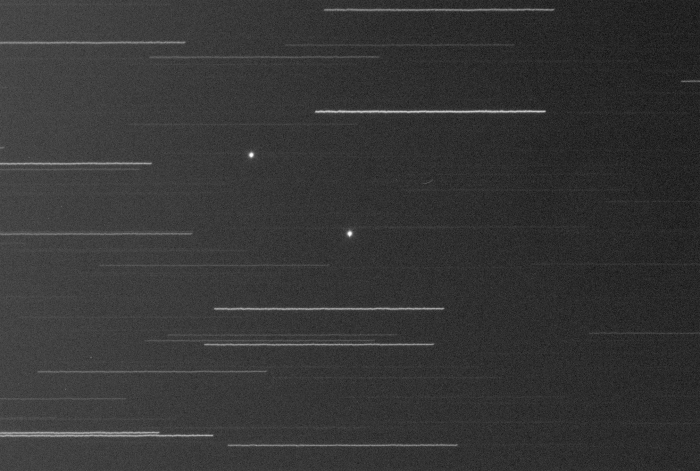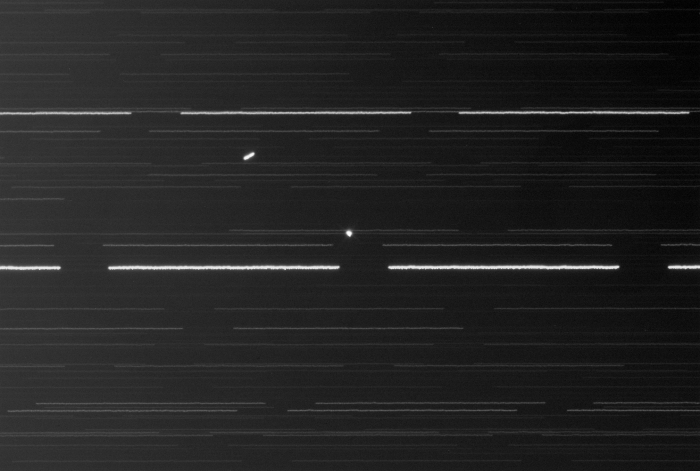
Roughly 500 geostationary satellites are currently placed in a static orbit (as viewed by a ground-based observer) about our planet at an
altitude ranging from 500 to 40,000 kilometers. The closest satellites orbitting the planet are believed to be spy satellites whereas most
distant are the geostationary group of satellites with an instrinsic magnitude of 11 or greater. As a result, due to their distance and faint
magnitude, geosats may be classified as the DSO's of the satellite world. At their high altitude not only can they virtually view the complete
globe below them but they also have the unique characteristic of having their orbital speed closely match the rotational speed of the earth
and, as such, give the impression to a ground-based observer of being stationary above the planet. These satellites have a wide range of
applications and functions and include remote sensing (Meteosat, GOES-East and GOES-West, GMS etc) and such telecommunication functions as
direct broadcast voice and video communications as well as live television coverage (Astra, Hot Bird, Telstar etc) by virtue of the fact they
can beam their signal from a "fixed" point in space relative to a ground source.
Note: Pakistan's original communications satellite was launched into geostationary orbit from Cape Canaveral,
Florida in 1996. Its replacement, Paksat 1R, was launched from Xichang, China on August 11, 2011 using a Long March 3B rocket. Paksat 1R
weighs 5.200 tons, features 12 C-band and 18 Ku-band transponders and is expected to be operational for about fifteen years. The satellite
provides communications and broadcasting services to both Pakistan and its immediate neighbours.
Paksat 1, the original satellite and which is to be replaced by Paksat 1R, remains active to this day and is visible in the images below.
It weighs 3.000 tons, features 24 C-band, 6 extended C-band and 4 Ku-band transponders and is responsible for voice and television
communication to residents of Indonesia and the general vicinity.
Note: The first image below represents a single one-minute exposure whereas the second image below is the sum of
the fifteen one-minute exposures captured and which reveals some very slight motion for the four Astra satellites during the approximate 20-minute
span and which quite often is characteristic of geosats (ex. due to inclination).
|
NORAD ID: 37779 Common Name(s): Paksat 1R Int Code: 2011-042A Location: 38.0° East Perigee: 35,784.3 km Apogee: 35,803.3 km Inclination: 0.0° Period: 1,436.1 min Launch Dates: Aug 11, 2011 Origin: Pakistan |
 
|
Date: Nov 02, 2012 23:35 - 23:57 UT+2 Location: Athens, Greece Equipment: AP 305/f3.8 Riccardi-Honders AP 1200GTO GEM SBIG ST-10XME SBIG CFW10 SBIG LRGB filters Integrations:
Image Scale: 1.21" per pixel Temperatures:
Software: CCDSoft V5.00.201 CCDStack V1.6.0.5 Photoshop CS5 |